Design for Living (film)
7.6 /10 1 Votes
75% Rotten Tomatoes Genre Comedy, Romance Duration Language English | 7.6/10 IMDb Music director John Leipold Country United States | |||||||||||||||||||||||||||||||||
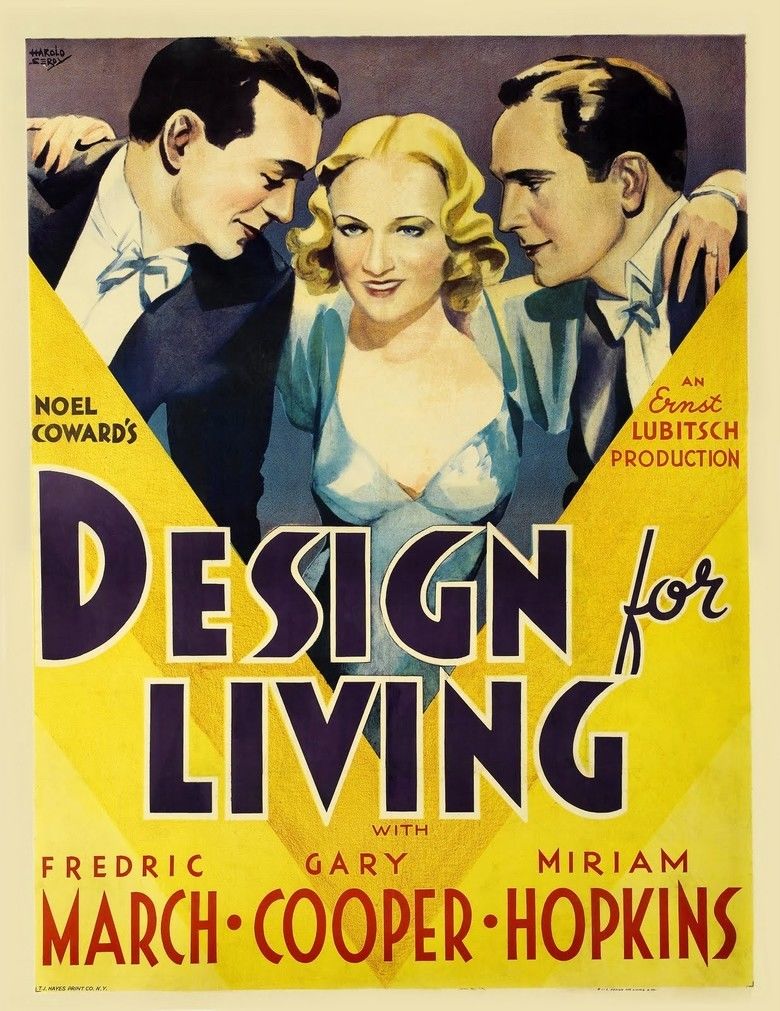 | ||||||||||||||||||||||||||||||||||
Release date December 29, 1933 (1933-12-29) (USA) Cast (Thomas B. 'Tom' Chambers), (George Curtis), (Gilda Farrell), (Max Plunkett), (Mr. Douglas, Theatrical Producer), (Plunkett's Stenographer) Similar movies Stolen Kisses , Mission: Impossible , Everyone Says I Love You , Inglourious Basterds , The Bourne Ultimatum , Team America: World Police | ||||||||||||||||||||||||||||||||||
Three reasons design for living
Design for Living is a 1933 American Pre-Code comedy film produced and directed by Ernst Lubitsch and starring Fredric March, Gary Cooper, and Miriam Hopkins. Based on the premise of the 1932 play Design for Living by Noël Coward, with a screenplay by Ben Hecht, the film is about a woman who cannot decide between two men who love her, and the trio agree to try living together in a platonic friendly relationship.
Contents
- Three reasons design for living
- Plot
- Cast
- Production
- Box Office
- Critical reception
- Accolades
- DVD releases
- References
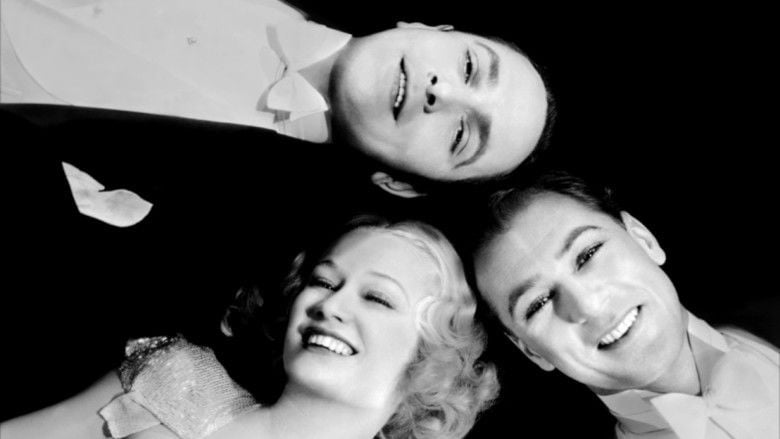
Criticism was mixed, with some critics praising the film, but many were ambivalent about its great departure from Coward's play. Coward said, "I'm told that there are three of my original lines left in the film—such original ones as 'Pass the mustard'." The film was a box office success, ranking as one of the top ten highest-grossing films of 1933. All three of the lead actors—March, Cooper, and Hopkins—received attention from this film as they were all at the peak of their careers.
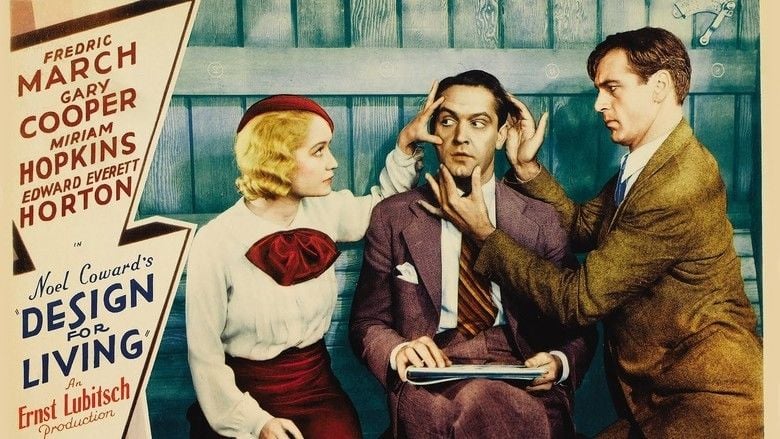
Plot
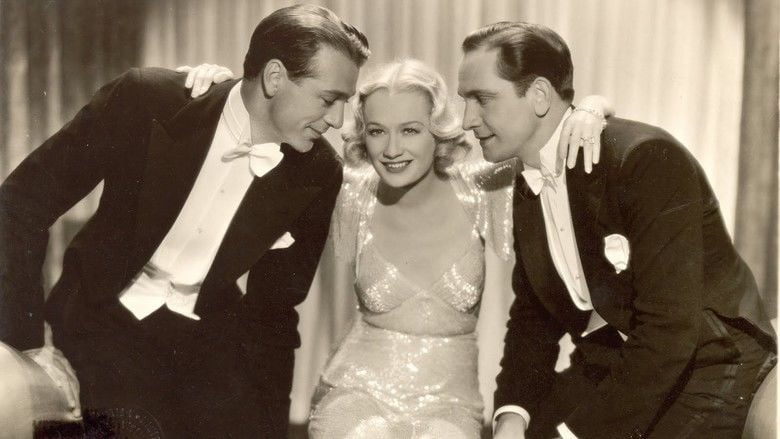
While en route to Paris via train, commercial artist Gilda Farrell meets artist George Curtis and playwright Thomas Chambers, fellow Americans who share an apartment in the French capital. Gilda works for advertising executive Max Plunkett, who has had no success in his efforts to engage her in a romantic relationship. Tom and George each realizes the other is in love with Gilda, and although they agree to forget her, they cannot resist her when she comes to visit. Unable to choose between the two, she proposes she live with them as a friend, muse, and critic—with the understanding they will not have sex.
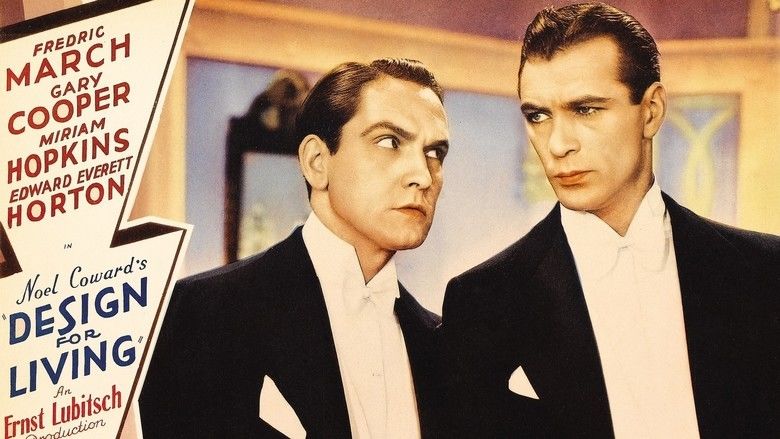
Gilda arranges for a producer to read Tom's play and he goes to London to oversee the staging of his work. During his absence, Gilda and George become involved romantically, much to Tom's consternation. One night at the theatre he meets Max, who tells him George has become highly successful. Tom returns to Paris and discovers George has vacated their apartment and moved into a penthouse with Gilda. George is in Nice painting a portrait, and Gilda and Tom rekindle their affair.

George returns and, realizing his former roommate and current lover have been trysting while he was away, orders the two to get out. Gilda decides to end the men's rivalry by marrying Max in Manhattan, but is so upset when she receives potted plants from her former beaux she fails to consummate the marriage. When Max hosts a party for his advertising clients, Tom and George crash the event and hide in Gilda's bedroom. Max finds the three laughing on the bed and orders the men out, and a brawl ensues, prompting all the guests to depart. Gilda announces she is leaving her husband, and she, Tom, and George decide to return to Paris and their unusual living arrangement.
Cast
Production
In the late 1920s and early 1930s, Coward wrote a succession of popular hit plays. On Broadway, Design for Living was a popular and critical hit starring Lynn Fontanne, Alfred Lunt and Coward, and its risqué ménage-à-trois theme made it controversial. Design for Living was one of more than a dozen of Coward's plays made into feature films.
Ernst Lubitsch initially asked Samson Raphaelson to write the screenplay, but he had no interest in adapting Coward. The director then turned to Ben Hecht, and they opted for a loose adaptation of Coward's plot, completely rewriting the play. In the original, the three main characters were sophisticated, urbane and cynical. Hecht changed the men's names, and the trio became naïve and exuberant, living the bohemian life worry-free in the middle of the Great Depression.
Lubitsch hoped to cast Ronald Colman and Leslie Howard as the male leads, but Colman demanded too much money and Howard didn't want to risk comparisons to the play's original cast. The director originally cast Douglas Fairbanks, Jr. as George, but the actor contracted pneumonia and had to withdraw just before filming began, and he was replaced by Gary Cooper. Lubitsch cast Paramount contract player Fredric March as Tom. According to the New York State Writers Institute website, a highlight of the film is the scene where, while struggling at his playwriting, he begs Miriam Hopkins, as Gilda, to smack him between the shoulder blades. Gilda was a role well-tailored for Hopkins' talents. Comic character actors Edward Everett Horton and Franklin Pangborn completed the principal cast.
Before officials began enforcing the Production Code in 1934, leading to censorship of sexuality from films, Paramount and other studios produced many with sexual or controversial content, including films starring Mae West, W. C. Fields and Marlene Dietrich and the fantasy films of Josef von Sternberg. From 1929 to 1934, Lubitsch "made Paramount the nec plus ultra of sophisticated sexiness," joyously weaving adult sexuality, cosmopolitan flair and a disdain for convention into his films, which included The Love Parade, Monte Carlo, Trouble in Paradise, The Smiling Lieutenant, and One Hour with You. Censorship difficulties arose with Design for Living due to sexual discussions and innuendos in the film. The Hays Office eventually approved it for release, but the film later was banned by the Legion of Decency, and in 1934 it was refused a certificate by the PCA for re-release under the strict new rules. The film's risqué subject matter also attracted press notice.
Box Office
The film was a box office disappointment for Paramount.
Critical reception
Mordaunt Hall of The New York Times said the film "may be only a skeleton of the parent work, but it has the same familiar rattle.... Notwithstanding the fact that Mr. Coward's clever lines were tossed to the four winds and that the whole action of the story is materially changed, Mr. Lubitsch, who knows his motion picture as few others do, has in this offering... fashioned a most entertaining and highly sophisticated subject, wherein his own sly humor is constantly in evidence. He has been ably aided and abetted by Mr. Hecht in this slaughter of the Coward play, and, if the original was sharper and brisker than the picture, the latter is filled with clever fun and the story, still with a decided Parisian flair, moves along swiftly and surely."
Time Out London observed, "Noël Coward's teacup wit and elegance hardly suits the beer glass temperament of his screen adapter Ben Hecht.... The script galumphs when it should glide, and neither the director nor the stellar cast can bring this would-be soufflé about a bohemian ménage-à-trois... to the right fluffy consistency."
Accolades
The film is recognized by American Film Institute in these lists:
DVD releases
The film was released on DVD on May 31, 2005 as part of The Gary Cooper Collection, which also includes The Lives of a Bengal Lancer, Peter Ibbetson, The General Died at Dawn, and Beau Geste. It was later released on both DVD and Blu-ray by The Criterion Collection on December 6, 2011, with several extras, unlike The Gary Cooper Collection.
References
Design for Living (film) WikipediaDesign for Living (film) IMDbDesign for Living (film) Rotten TomatoesDesign for Living (film) themoviedb.org
